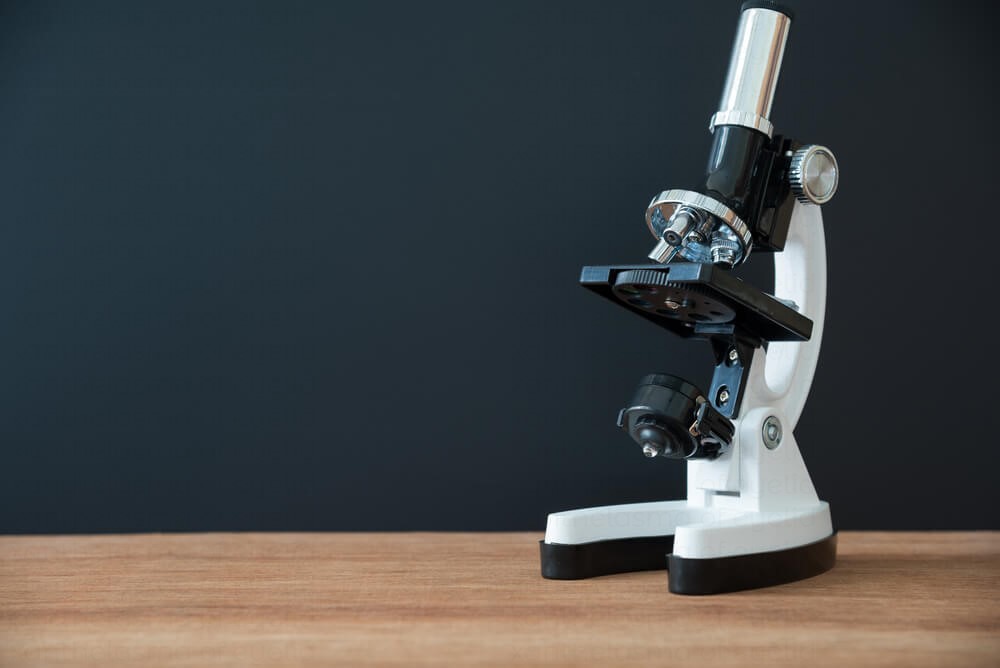Getting Rid Of Xanthelasma
If you notice yellowish bumps on or near your eyelids, you might be observing a condition known as xanthelasma. As a collection of cholesterol deposits under the skin, these patches or nodules can give insight into your overall health and may indicate the need to address underlying health concerns. Understanding this condition is the first step towards management and treatment.
Understanding Xanthelasma: What Is It?
– Definition: Xanthelasma refers to benign, yellowish plaques that typically form on or around the eyelids.
– Nature: These lesions can vary in texture, being soft, chalky, or semi-solid. They do not cause pain but may be a cosmetic concern for many.
– Relationship to xanthoma: Xanthelasma is a specific form of xanthoma that is localized to the eyelids.
Treatment options for xanthelasma are diverse and may include:
– Liquid Nitrogen Cryotherapy: Utilization of extreme cold to destroy the xanthelasma.
– Laser Surgery: A high-precision technique to remove lesions with minimal damage to surrounding tissue.
– Radiofrequency Ablation: A process that uses radio waves to generate heat and dissolve the cholesterol deposits, sometimes followed by sutures.
– Xanthel ® Removal Cream: At home treatment, that is effective to the removal of xanthelasma and also only one application is needed to remove the plaques.
It should be noted that:
– Effectiveness: These treatments are generally effective, but multiple sessions can be necessary, especially with laser treatment.
– Reoccurrence: Xanthelasmas have a tendency to recur even after treatment, so monitoring is important.
The Importance of Diagnosing Underlying Health Issues
– Underlying Health Conditions: Xanthelasma can be indicative of higher cholesterol levels or other lipid disorders, hence it is crucial to address these underlying conditions.
– Working with Your Doctor: Collaboration with your healthcare provider to manage cholesterol can reduce the risk of xanthelasma recurrence.
– Long-Term Management: Your doctor may recommend dietary changes, medications, or lifestyle modifications to help manage your cholesterol levels effectively.
In in reflection, while xanthelasma removal methods are varied and effective, ongoing management and proactive health care are essential to mitigate the chance of recurrence. By working closely with your doctor to monitor and lower cholesterol levels, you can reduce the likelihood of future xanthelasmas and also benefit your overall health. Remember, treatment of xanthelasma not only serves the purpose of cosmetic enhancement but also acts as a catalyst for a healthier lifestyle and improved health outcomes.

Surgical Options for Xanthelasma Removal
Traditional Surgery: Techniques and Recovery
- Procedure Overview:
Your healthcare provider may suggest traditional surgery to remove xanthelasmas. This method involves using a scalpel to carefully excise the lesions.
- Local Anesthesia:
You will receive local anesthesia to numb the area, ensuring that you are comfortable and pain-free throughout the procedure.
- Postoperative Care:
After the surgery, you’ll receive instructions on how to care for the incisions, helping to reduce the risk of infection and promote healing.
- Recovery Time:
Recovery times can vary, but most patients can resume normal activities within a few days. However, it’s crucial to avoid strenuous activities until fully healed.
- Risks and Considerations:
Potential risks include scarring and changes in skin pigmentation, so discuss these with your surgeon to understand the implications fully. Also consider that this is one of the most expensive option available.
- Follow-up:
You will likely need a follow-up appointment to assess the success of the removal and to monitor for any signs of recurrence.
Surgical Removal Using Extreme Heat
- Electrocautery:
One method utilizing extreme heat is electrocautery, where an electric current heats a wire which then burns or vaporizes the skin growth.
- Laser Surgery:
Alternatively, laser surgery can remove xanthelasmas with focused beams of light that generate intense heat.
- Procedure Specifics:
These methods target only the affected areas, minimizing damage to surrounding tissues.
- Anesthesia and Pain Management:
Local anesthesia is used, and measures are taken to manage any discomfort.
- Advantages:
Benefits include precision and reduced bleeding compared to traditional surgery. Recovery is often quick, and scarring may be less noticeable.
- Potential Side Effects:
Side effects can include temporary swelling, redness, or discoloration of the treated area.
- Recurrence Prevention:
To minimize the chances of xanthelasmas returning, work with your healthcare provider to manage underlying conditions like high cholesterol.
In in reflection, numerous surgical treatments are available for removing xanthelasmas, ranging from traditional methods to advanced techniques using extreme heat. Each method comes with its own set of considerations, recovery times, and potential side effects. It’s vital to discuss with your healthcare provider the best option for your specific case, taking into account the size and location of your xanthelasmas and your overall health. While surgery can effectively remove these lesions, ongoing collaboration with your doctor for cholesterol management is crucial to reduce the likelihood of recurrence.

Cryotherapy for Xanthelasma
The Process of Liquid Nitrogen Cryotherapy
- Method Overview:
Liquid nitrogen cryotherapy uses extreme cold to remove xanthelasmas. Your healthcare provider will apply liquid nitrogen to the affected area to freeze and destroy the lipid deposits.
- Application Technique:
A cotton swab or spraying device delivers the liquid nitrogen directly to the xanthelasma. It is a precise method that minimizes damage to the surrounding skin, but needs to be professionally applied due to possible eye damage.
- Sensation During Treatment:
As liquid nitrogen is applied, you might feel a burning or stinging sensation. However, this discomfort is short-lived and generally well-tolerated.
- Duration of Treatment:
The procedure is quick, usually lasting only a few minutes, which means it can be done in a simple outpatient visit.
- Aftercare Instructions:
You will receive guidance on caring for the area post-treatment. It is crucial to follow these instructions to ensure proper healing and minimize the risk of complications.
- Healing Time:
The treated area may swell, blister, and form a crust. Healing typically occurs within a few weeks, leaving behind healthy new skin.
Risks and Efficacy of Cryotherapy in Xanthelasma Treatment
- Potential Complications:
Possible risks include blistering, scarring, and changes in skin color, particularly hypopigmentation or hyperpigmentation in the treated area.
- Success Rates:
Cryotherapy is generally effective in removing xanthelasmas but will require multiple sessions, especially for larger or deeper growths.
- Consideration for Repeat Treatments:
While cryotherapy often yields positive results, some xanthelasmas will recur afterward, necessitating additional treatments.
- Benefits Over Other Treatments:
Cryotherapy has the advantage of a shorter recovery time and is less invasive compared to surgical options.
- Collaborative Management:
Working with your healthcare provider to manage underlying lipid disorders can help reduce the chance of xanthelasma recurrence after cryotherapy.
- Cost-Effectiveness:
Cryotherapy is a cost-effective option for xanthelasma removal compared to some other surgical methods, making it accessible for many patients.
In choosing cryotherapy as a treatment option for your xanthelasmas, you are opting for a procedure known for its efficacy and relatively minimal downtime. It is imperative that you adhere to the aftercare regimen provided by your healthcare provider and keep open communication regarding any concerns you might have during the healing process. Your provider may suggest subsequent follow-ups to monitor the treated area for any signs of recurrence and to manage your cholesterol levels effectively to prevent new xanthelasmas from developing.
Laser Surgery Approach
Laser Surgery: How It Works on Xanthelasma
- The precision of Laser Technology: Laser surgery targets xanthelasmata with concentrated light energy, causing minimal disturbance to your surrounding skin tissue.
- High Success Rate: This procedure is known for its effectiveness in removing xanthelasma patches, often requiring fewer treatment sessions than other removal methods.
- Quick and Efficient Procedure: Each session typically lasts only minutes, and the number of sessions depends on the size and depth of the xanthelasmas.
- Comfort Under Control: Though you might feel slight discomfort, the application of local anesthesia makes the procedure relatively painless.
- Limited Downtime: One of the significant advantages of laser surgery is the reduced recovery time, allowing you to return to your daily activities promptly, often within the same day.
- Aftercare Essentials: Following the procedure, you will receive specific care instructions to ensure proper healing and to maximize the results of your treatment.
- Risk Management: Side effects are generally minimal, but may include temporary redness or sensitivity in the treated area.
- Ongoing Medical Partnership: It is crucial to maintain close communication with your healthcare provider regarding long-term preventive measures, such as cholesterol management, to reduce the chance of recurrence.
Post-Treatment Care and Considerations for Laser Surgery
- Follow the Guidelines: Adhering to the aftercare instructions provided by your healthcare provider is paramount for successful healing.
- Monitoring for Side Effects: Keep an eye out for any unusual symptoms or side effects and report them to your healthcare provider immediately.
- Sun Protection: Protecting the treated area from sun exposure is essential, as the new skin will be more sensitive to ultraviolet radiation.
- Keep the Area Clean: Gently cleaning the treated area and using any prescribed ointments will aid in the healing process and help prevent infection.
- Avoid Strenuous Activities: To prevent complications, it’s advisable to limit physical activities, particularly those that could strain the treated area, until your healthcare provider gives you the all-clear.
- Watch for Signs of Infection: Signs such as increased warmth, redness, or drainage from the treated sites need to be reported as they may indicate an infection.
- Recurrence Vigilance: Attend all scheduled follow-ups to monitor your recovery and discuss any concerns about potential recurrence of xanthelasma.
- Lifestyle Adjustments: Make recommended dietary and lifestyle changes to address underlying health issues, such as high cholesterol levels, which may be contributory factors.
When considering laser surgery for the removal of xanthelasma, it’s essential to understand both the procedure and the aftercare involved thoroughly. Your healthcare provider will guide you through the process and provide support along the way. It’s critical to take care of the treated area following the surgery and to implement any necessary lifestyle changes to improve your overall health and prevent future occurrences of xanthelasma.

Radiofrequency Ablation
Understanding Radiofrequency Ablation in Xanthelasma Removal
- Non-Invasive Technique: Radiofrequency ablation (RFA) uses high-frequency radio waves to heat and dissolve xanthelasmas, offering a minimally invasive option.
- Effective for Multiple Lesions: This method is particularly useful for treating several xanthelasma lesions in one session, potentially saving time.
- Procedure Duration: Each session is relatively quick, but the total number of sessions may vary based on the number and size of lesions.
- Anesthesia: Your healthcare provider will apply local anesthesia, ensuring you remain comfortable throughout the RFA procedure.
- Swift Recovery: One advantage of RFA is the quick healing process, with most patients able to resume normal activities shortly after the treatment.
- Recurrence Prevention: To minimize the chance of xanthelasmas returning, your healthcare provider may suggest engaging in proactive cholesterol-lowering strategies.
- Collaborative Care: After RFA, your provider will outline a tailored plan for follow-up care and recommendations for managing any potential side effects.
The Role of Stitches in Post-Ablation Recovery
- Healing Support: In some cases, your healthcare provider may use stitches to close the site post-RFA, promoting better healing and reducing scar formation.
- Personalized Care: Whether stitches are necessary will depend on the depth and size of the treated xanthelasma.
- Stitch Removal: If stitches are used, your provider will schedule a follow-up appointment for their removal, generally within a week or two post-treatment.
- Scar Minimization: By following your provider’s instructions on wound care, you can further decrease the likelihood of scarring.
- Professional Oversight: Your healthcare team will provide supervision throughout the healing process to address any complications promptly.
- Activity Modification: After RFA, it’s crucial to avoid strenuous activities that might affect the treatment area until your provider advises it is safe to do so.
- Long-Term Outcome: By adhering to the recommended lifestyle changes and following your healthcare provider’s guidance, you stand a better chance of achieving a satisfactory outcome and preventing future occurrences of xanthelasmas.
When choosing radiofrequency ablation for the treatment of xanthelasma, you should discuss the potential for stitches and the specific care that will follow with your healthcare provider. This conversation ensures that you have a comprehensive understanding of the RFA procedure, the role of stitches in the healing process, and the necessary steps to foster optimal recovery while reducing the risk of recurrence.

Xanthel ® Removal Cream
Xanthel ® Removal Cream for Xanthelasma: Procedure and Effects
- Non-Invasive Option: Xanthel ® is a less invasive treatment compared to surgical options and may be suitable if you prefer a non-surgical approach.
- Procedure Insights: The affected area will be treated with a formulated solution at home by the client, that reacts with the cholesterol laden skin cells and as the skin heals it takes the xanthelasma with it.
- Treatment Guide: Xanthel ® is supplied with an easy to use guide on how to remove your xanthelasma, which is formulated to work with your skin tone, plaque depth and more.
- Duration and Frequency: Only one application is needed and the xanthelasma will slowly fade away. The skin returns back to its natural state before the xanthelasma issue arose.
- Recovery Period: The treated skin will need time to heal. Post-procedure, an anti-bacterial cream is applied to the area to speed up the healing process.
- Effectiveness: Due to the removal creams ability to target all the cholesterol cells, the mechanism for the xanthelasma to reach the surface is also treated and in so removes the ability for the return of the xanthelasma.
- Aftercare Routine: As with any skin treatment, following an appropriate aftercare routine will maximize the effects and support skin healing.

Non-invasive Alternatives
When it comes to managing your xanthelasmas, non-invasive alternatives are worth exploring if you are looking for methods that don’t involve traditional surgery. These approaches are generally considered safer, have shorter recovery times, and are often less painful, while still effectively reducing the appearance of xanthelasmas. Discuss with your healthcare provider the possibility of using non-surgical treatments as a first line of defense or in combination with other therapies.
Electrodesiccation as a Non-Surgical Solution
Electrodesiccation is a technique that may be recommended by your healthcare provider:
– Understanding the Process: This procedure involves using a high-frequency electrical current to dry out the xanthelasma lesions. The current is carefully applied to the target area to minimize damage to the surrounding skin.
– Minimally Invasive: As a minimally invasive option, electrodesiccation presents less risk of scarring compared to surgical procedures and is often performed with local anesthesia.
– Quick Recovery: The recovery time following electrodesiccation is usually shorter than with surgical removal. It’s important to follow your provider’s aftercare instructions closely to ensure proper healing.
– Potential for Repetition: Depending on the extent of your xanthelasmas, multiple sessions may be required to achieve the desired outcome. Although effective, similar to other treatments, there’s still a chance that xanthelasmas could recur.

Managing Recurrences and Multiple Sessions
The Potential Need for Multiple Treatment Sessions
When you undergo chemical peels or topical applications for the treatment of xanthelasma, you may need to brace yourself for multiple sessions to achieve the desired outcome. Your skin’s response to treatment is unique, and thus, it might necessitate a series of procedures to fully clear the xanthelasmas.
– Expectation Setting: Anticipate that complete removal may not be immediate, and patience is crucial.
– Scheduled Follow-ups: Your doctor will likely schedule follow-up appointments to monitor progress and plan subsequent treatment sessions.
– Customized Treatment Plan: The frequency and number of treatments will be tailored to your specific situation.
– Monitoring Results: It’s essential to keep track of the changes in the appearance of your xanthelasmas after each session, as this will help your healthcare provider make necessary adjustments to your treatment.
Strategies to Minimize the Risk of Xanthelasma Recurrence
Since xanthelasmas have a tendency to recur, implementing strategies to minimize this risk is beneficial. Reducing recurrence involves both post-treatment care and lifestyle changes.
– Cholesterol Management: Work closely with your healthcare provider to manage your cholesterol levels, as elevated levels are often associated with the occurrence of xanthelasma.
– Healthy Diet: Adopt a diet low in cholesterol and saturated fats, and rich in fruits, vegetables, and whole grains.
– Regular Exercise: Incorporate regular physical activity into your routine to help maintain a healthy weight and improve your cholesterol profile.
– Medical Follow-ups: Keep regular appointments for cholesterol monitoring and to evaluate the skin around your eyes.
– Sun Protection: Protect your skin from sun exposure to prevent damage, as the skin healing from treatments may be more sensitive to UV rays.
– Avoid Smoking: Smoking can contribute to higher cholesterol levels and vascular problems, increasing the likelihood of xanthelasma recurrence.
– Adherence to Treatment: Following through with the recommended treatment plan and using any prescribed medications consistently will support lasting results.
You are empowered to not only seek effective treatment for xanthelasma but also to adopt measures that may discourage its return. Your commitment to your health and collaboration with your healthcare team is pivotal. Although the journey may involve multiple sessions and a dynamic approach to manage your condition, achieving the best possible outcome for your skin and overall health is well worth the effort.

Summarizing Xanthelasma Treatments
Balancing Treatment Effectiveness and Patient Considerations
As you grapple with the decision of removing your xanthelasma, it is crucial to strike a balance between the effectiveness of the available treatments and your personal considerations. Here’s what you need to weigh:
– Treatment Options: You have a range of treatments to choose from — Xanthel ® removal cream, cryotherapy, laser surgery, radiofrequency ablation, and surgery using extreme heat. Each has its merits and potential risks.
– Side Effects: Be aware of the possible side effects of each treatment, such as scarring, pigment changes, or injury to the eyelid.
– Recovery Time: Discuss with your doctor the expected downtime and any limitations on activities following each type of procedure.
– Financial Implications: Consider the costs associated with each treatment option, as some may not be covered by insurance.
– Long-Term Outlook: Understand that xanthelasmas may recur, and staying proactive in your health management is necessary.
You are at the center of this decision-making process, and your preferences and circumstances should lead the discussion. Evaluate the pros and cons, and together with your healthcare provider, you can select a treatment path that fits your medical needs and lifestyle.





